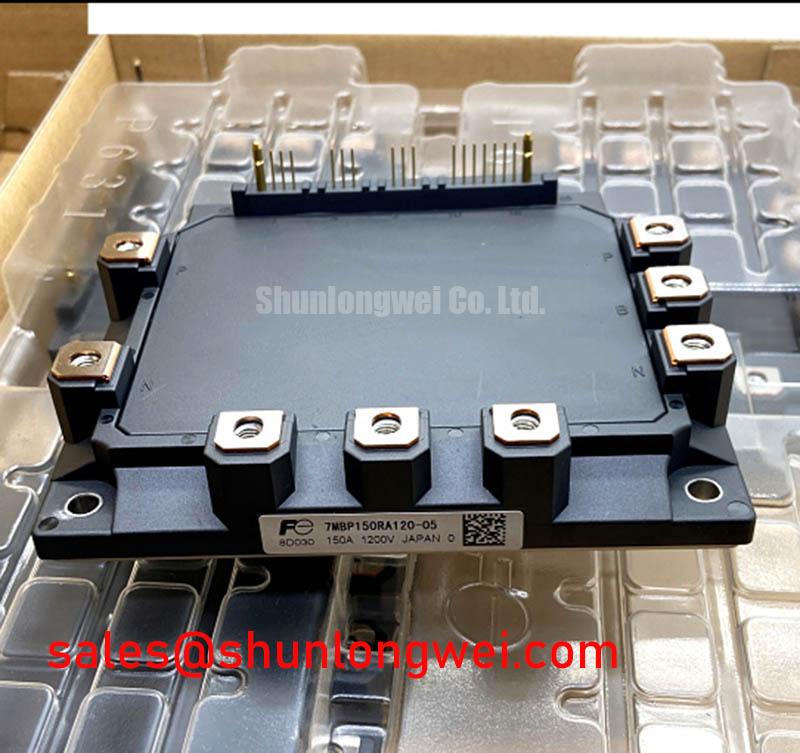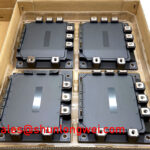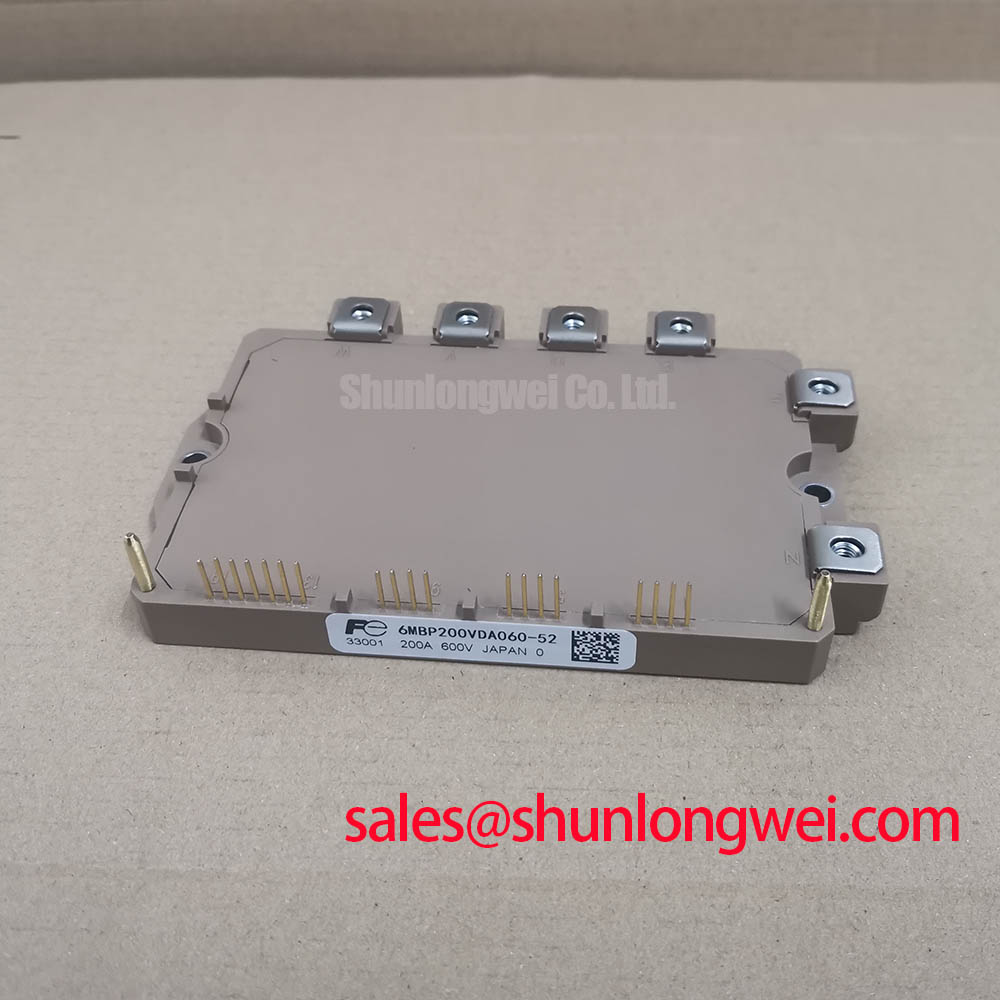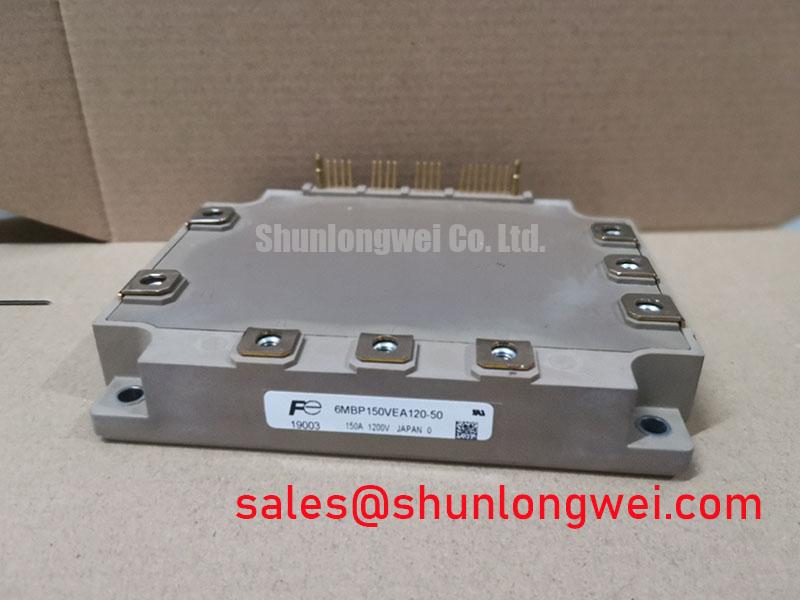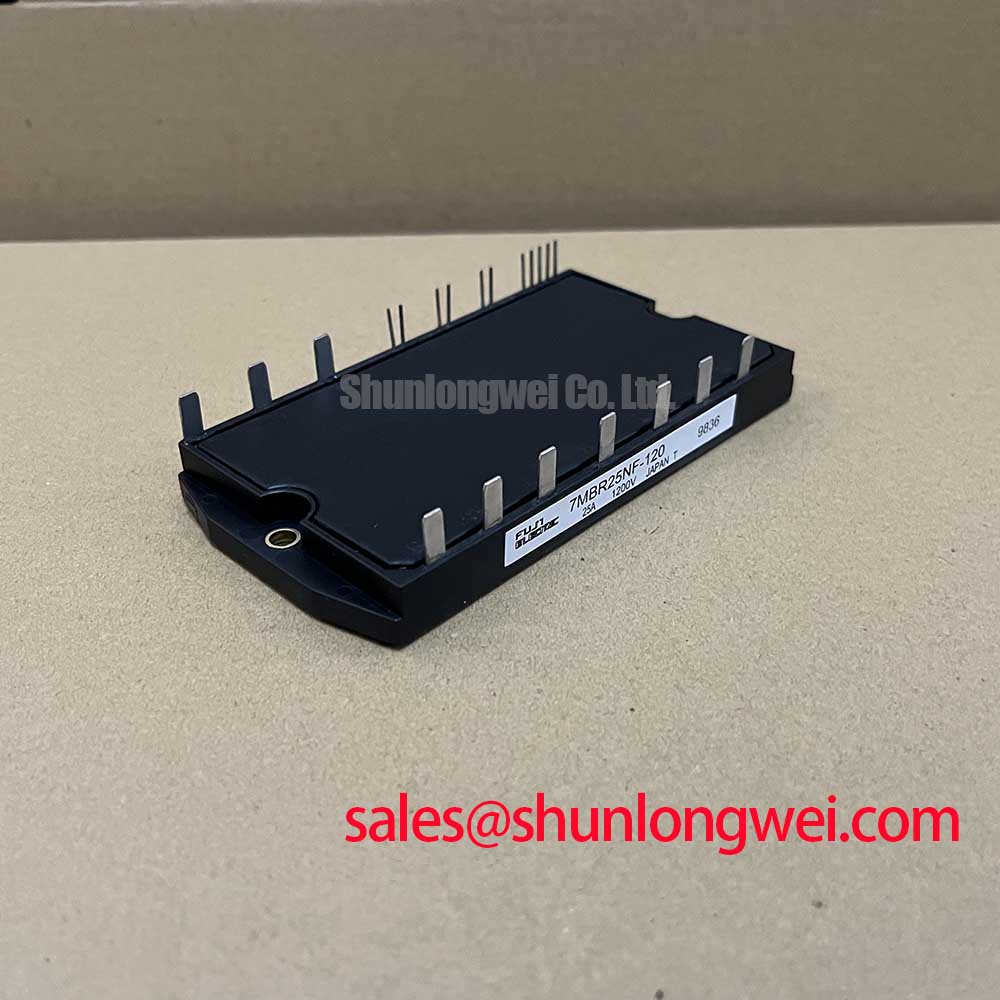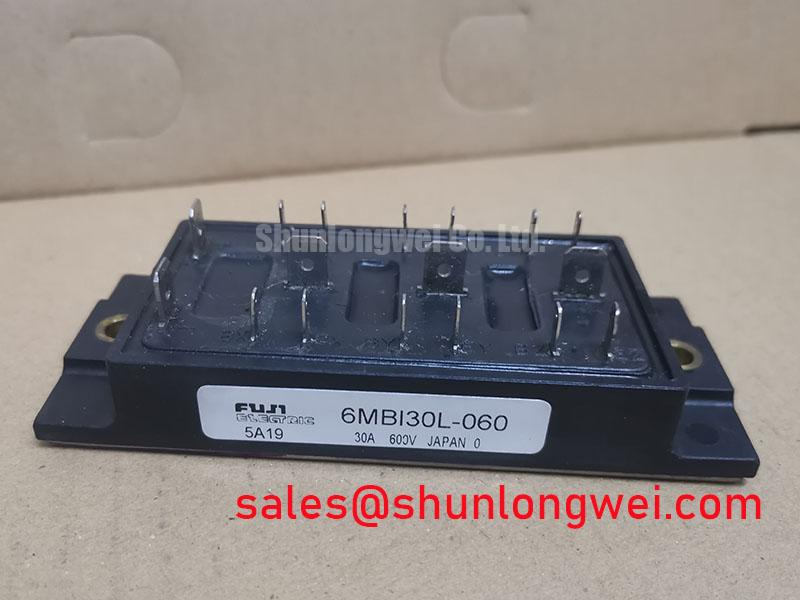Content last revised on November 13, 2025
Fuji Electric 7MBP100RA120-05 | High-Integration 7-Pack PIM for Compact Motor Drives
The Fuji Electric 7MBP100RA120-05 is an expertly engineered Power Integrated Module (PIM) designed to streamline the development of low-to-medium power motion control systems. By integrating a three-phase converter, a brake chopper, and a three-phase inverter into a single, compact P-615 package, this module offers a significant reduction in system complexity, assembly time, and overall footprint. It's an ideal solution for engineers tasked with designing efficient and reliable power conversion stages under tight space and budget constraints.
- 7-in-1 Integration: Combines rectifier, brake, and inverter stages, minimizing component count and simplifying PCB layout.
- Robust Performance: Rated for 1200V and 100A, providing ample overhead for demanding industrial applications.
- Optimized for Reliability: Utilizes proven Non-Punch-Through (NPT) IGBT technology for ruggedness and stable performance.
- Enhanced Thermal Management: Features an integrated NTC thermistor for real-time temperature monitoring, enabling proactive thermal protection.
Key Electrical Characteristics
This table provides a quick reference for the core specifications of the Fuji Electric 7MBP100RA120-05. For comprehensive details, engineers should consult the official datasheet. Download the 7MBP100RA120-05 Datasheet here.
| Parameter | Value |
|---|---|
| Collector-Emitter Voltage (V_CES) | 1200 V |
| Continuous Collector Current (I_C) @ T_C = 80°C | 100 A |
| Collector-Emitter Saturation Voltage (V_CE(sat)) Typ. | 2.2 V |
| Package Type | P-615 |
| Internal Configuration | 7-in-1 (Three-Phase Rectifier + Brake + Inverter) |
| Isolation Voltage (V_isol) | 2500 V (AC for 1 minute) |
Application Scenarios & Engineering Value
The high level of integration in the 7MBP100RA120-05 directly translates into tangible benefits across several key applications, addressing common engineering pain points.
- Compact AC Motor Drives: For general-purpose Variable Frequency Drives (VFDs) up to ~30kW, the PIM architecture drastically reduces the physical size of the power stage. This allows for smaller enclosures, lower material costs, and simplified manufacturing processes compared to designs using discrete components.
- Robotic Servo Drives: In precision motion control, reliability and thermal stability are paramount. The module's co-packaged design ensures optimized thermal coupling between components, and the built-in NTC thermistor provides the crucial feedback needed for robust thermal management, a key factor discussed in our guide to IGBTs in robotic servo drives.
- Uninterruptible Power Supplies (UPS): The module's consolidated power stages simplify the design of online UPS systems. The inherent reliability of Fuji Electric components ensures maximum uptime for critical infrastructure.
Technical Deep Dive: The PIM Advantage
Choosing a Power Integrated Module (PIM) like the Fuji Electric 7MBP100RA120-05 is a strategic design decision. The primary benefit lies in reducing parasitic inductance. In a discrete design, the physical wiring and PCB traces between the rectifier, brake circuit, and inverter introduce stray inductance, which can cause voltage overshoots during high-speed switching. By integrating these components onto a single substrate, Fuji minimizes these parasitic elements, leading to cleaner switching waveforms, reduced EMI, and often a smaller, less expensive snubber circuit requirement. This level of integration is a core principle in the design of modern IGBT modules.
Frequently Asked Questions for Design Engineers
1. When should I select this PIM over a discrete IGBT solution?
A PIM like the 7MBP100RA120-05 is the superior choice when design goals include a compact footprint, reduced assembly complexity, and faster time-to-market for power systems under ~30kW. While discrete components offer more layout flexibility, they require significantly more engineering effort in PCB design, thermal interface management, and parasitic mitigation.
2. What are the key considerations for the gate drive design for this module?
Given its NPT IGBT technology, a standard gate drive voltage of +15V for turn-on and -5V to -10V for turn-off is recommended. A negative turn-off voltage is crucial to prevent parasitic turn-on induced by the Miller effect, especially in noisy industrial environments. For further insights, review our article on robust IGBT gate drive design.
3. How does the integrated NTC thermistor improve system reliability?
The NTC thermistor provides a direct, real-time measurement of the module's substrate temperature. This data allows the system controller to implement precise over-temperature protection (OTP). It can trigger a power de-rating strategy or an emergency shutdown if the temperature exceeds safe limits, preventing catastrophic failure and extending the operational life of the drive. If you need help selecting the right module for your application, please contact our technical team for expert guidance.

